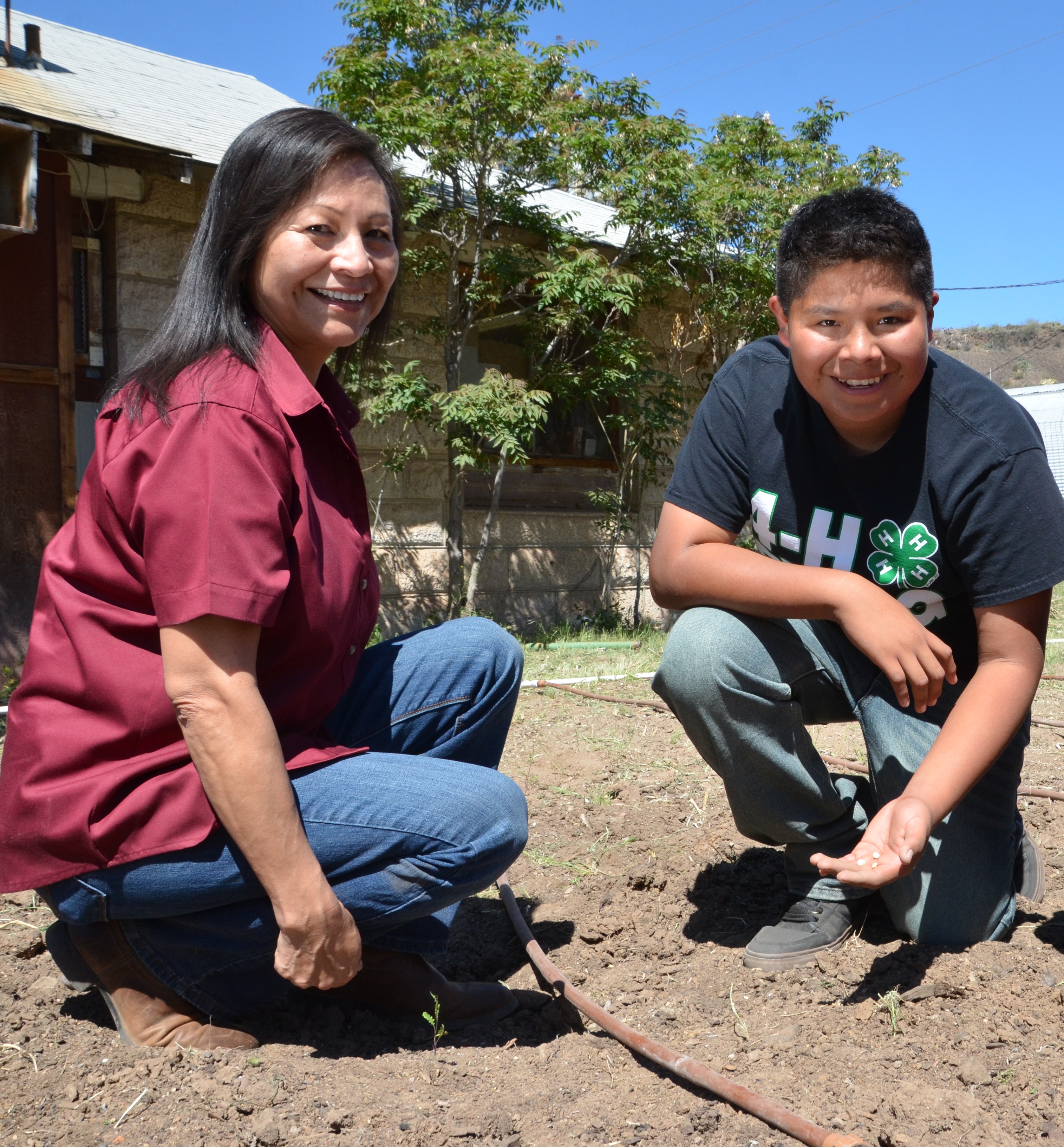
Millie Titla, NRCS district conservationist in San Carlos, Ariz., and Noah Titla, San Carlos 4-H Garden Club at the club’s community garden.
By Beverly Moseley, NRCS
An Apache youth, Noah Titla, 13, has chosen to follow in the footsteps of generations of San Carlos Apaches by growing and harvesting his own food. His passion for reconnecting growing food with tribal traditions has been a catalyst for increasing awareness of the benefits and availability of fresh food on the San Carlos Apache Reservation in southeastern Arizona.
Through his hard work at the San Carlos 4-H Garden Club’s community garden, Noah is making a difference in a state included in the USDA’s StrikeForce for Rural Growth and Opportunity. The initiative addresses high-priority funding and technical assistance needs in rural communities in 16 states, including Arizona, with a special emphasis on historically underserved producers and communities in designated counties with persistent poverty, such as the San Carlos Apache Reservation.
“I didn’t know that such a small community could grow such a good amount of crops,” Noah said about his club’s community garden. Club members share the harvested food with their friends and families.
Besides all the hard work club members put into keeping it going, the community garden is thriving thanks in part to StrikeForce and the resulting partnerships between USDA’s Natural Resources Conservation Service, National Institute of Food and Agriculture and Rural Development, as well as University of Arizona Cooperative Extension and local community members.
Noah’s aunt, Millie Titla, NRCS district conservationist in San Carlos, teaches youth working in the garden about the importance of soil and water conservation practices. She also provides heirloom Apache squash, corn and watermelon seeds, which she grows behind the NRCS field office in San Carlos.
“Millie is my mentor. She really helped me out a lot with this and with my community fellow Apache members,” Noah said.
“Gardening has been a part of the Apache culture for thousands of years, and we’ve lost the traditional way of gardening throughout the century,” the elder Titla said. “I wanted to bring this back to the community so they could appreciate what gardens are about and what gardens can provide for their families.”
Fellow Arizona farmers, Alfredo and Sabrina Zamora, are also doing their part to help the community. The Zamoras, who have worked with NRCS the last 20 years, recently replaced four outdated pivot irrigation systems with new upgraded ones on their cropland with financial assistance through StrikeForce.
They regularly hold field days on their farm to share with other local farmers the benefits of USDA programs and to increase participation in those programs, especially among Hispanic farmers.
“Here along the border areas, there are a lot of small landowners—a lot of underserved, nontraditional clients and USDA’s StrikeForce provides opportunities for them,” NRCS district conservationist Gerry Gonzalez said.
Several states to the east, StrikeForce also helped Arizona farmer, Mildred Griggs, equip her seasonal high tunnel with irrigation, which keep plants growing strong with the precise amount of water. Griggs uses micro-irrigation to drop water at the base of the plants. The results of this work lead to fresh, tasty produce that is enjoyed by both Griggs and the community.
“StrikeForce has afforded some of the smaller alternative crop producers to be eligible to grow their crops under the seasonal high tunnel,” NRCS district conservationist Derinda Smith said. “Mildred’s done a really great job with this seasonal high tunnel. She&’s made it work for her and the community and that’s a really, really nice thing for her to do.”
StrikeForce is creating conservation opportunities in rural communities and tribes across the nation. Learn more.





